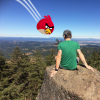About iRay Shaders
 marcelle19
Posts: 174
marcelle19
Posts: 174
I just can't seem to get the hang of using iRay Shaders. I've tried selecting individual surfaces, all of an actor and/or other type of prop - very seldom do I get anything to work. Mostly, I get a message that goes by so fast I can't read it, but I'm sure it is something to the effect of "that won't work with this," 'cause it doesn't.
I know it must be simplicity itself, but I just can't get it. Help?


Comments
Some context would help.
Are you trying to apply shaders, or materials? If you select an individual surface, you can apply a shader to change its properties. On the other hand, a material is a collection of shaders assigned to particular names. Unless the names match (or you manually change the names in the geometry editor), nothing will happen.
Shaders are reusable. Materials are applied to objects with predefined surface zones.
The usual thing that some of us forget is to select both the figure in the scene tab and the surface in the surfaces tab. If both are not selected, the shader will not be applied. It often helps to use the surface selection tool which is the icon in the toolbar that looks like three playing cards with a little arrow attached.
Like said materials are a collection of shaders, they use the names because those usually follow strict UV mapping and are intended for specific geometry. Shaders are intended to be universal but the UV set still dictates how they map across the object. Also keep in mind the difference between RSL and MDL textures, RSL being for 3Delight and MDL for Iray (MDL is mostly PBR based). You can use either, but the RSL are not ideal for Iray and will cause your renders to be slower..so they say I haven't tested it. And it's not unsual to have a few non MDL to sneak into a scene.
Whatever the message said can be found in the log (Help->Troubleshooting->View Log File)
Iray Shaders - they look like little balls, sort of, and come in sets. I always thought that selecting the object, or objects, would make them usable. For example, one set I bought was entirely for fingernail shaders - the only times I've applied it and got a result, the entire arm and hand surface was covered - most times, nothing has happened.
However, I'm taking into account the advice I'm getting in this thread, and I'll try to modify my approach to using them accordingly.
That is very helpful - thank you.
Would one select the figure and/or object first, then the surface, or does the surface selection tool do both simultaneously?
Thank you for that. Where, exactly, do I find the Log File? Is it the Log File for the render, or the general Log File? In either case, I'm not certain where to find either.
Thank you.
As I said, Help->Troubleshooting->View Log File
The newest ones will be found at the end of the file.
For a shader, you need to select the surface you want to apply it to, or nothing will happen. For a fingernail shader, you would select the Fingernail or Toenail surface. If you applied it once and the entire arm was converted, that probably means you already had the Arms surface selected without realizing it.
As I said, materials are meant to be applied to objects with pre-created material zones. In addition, there are also hierarchical material presets, which are meant for assets that are fitted to a figure. If a figure comes with eyelash materials, those are often H. Materials, since the eyelash is a separate asset. Some PAs also use them to allow you to change an entire figure's wardrobe textures by just applying an H. Material to the figure.
Thank you once again. I didn't put it together that you actually meant the Help tab in Daz Studio. (Yes, I am that dumb.) That you were willing to repeat it made it click.
Thank you. I am constantly astounded by how much there is to learn with this type of application. Photoshop was intuitive, more or less, but once I started doing these 3D renders, I found I couldn't just learn by trial and error like I did with PS.